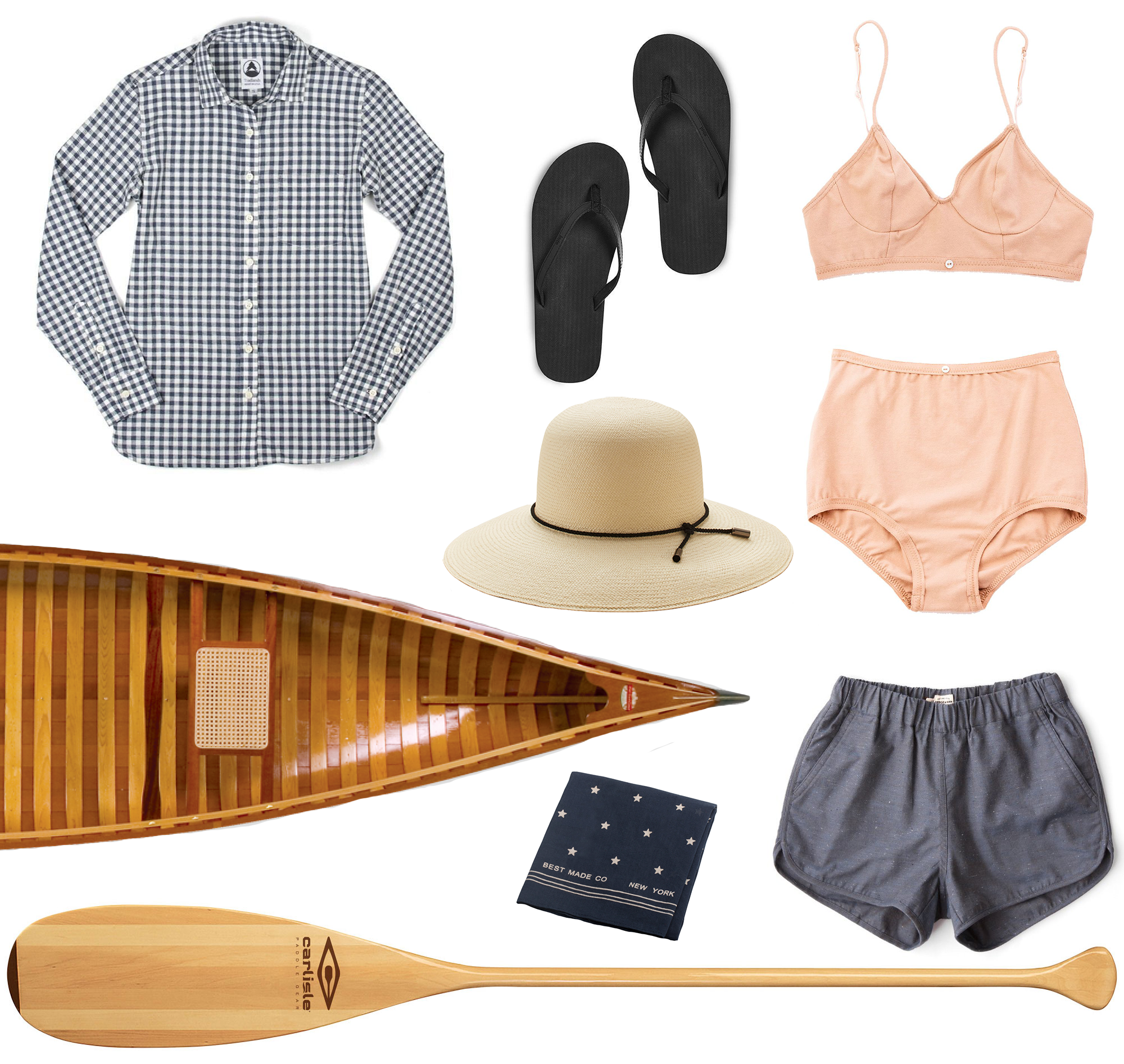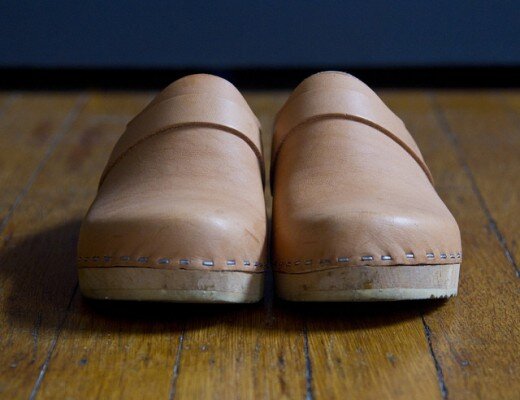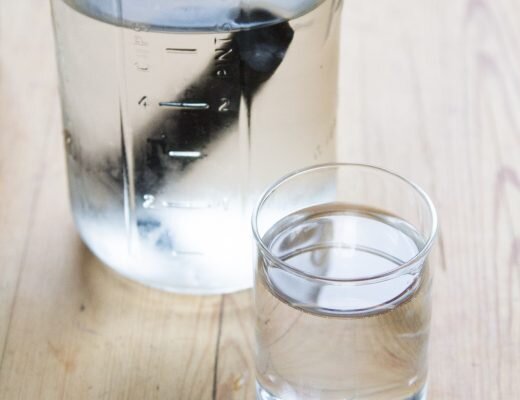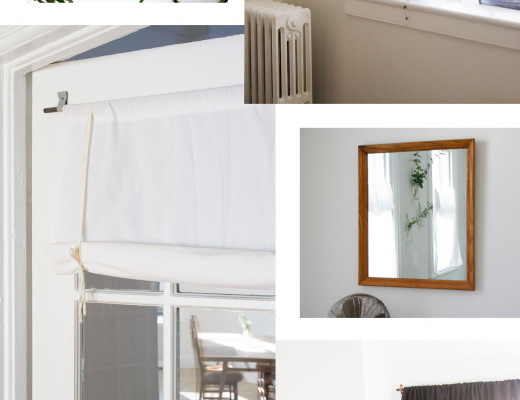A quiet canoe trip down a meandering river? Worth every blister you might get. And a far cry from absent-mindedly taking the wrong subway train during your morning commute. If you can manage a sun-dappled route and stop for skinny dipping in refreshing waters, even better. A rock for eating a picnic lunch? A quiet spot for taking a snooze? Yes and yes.
Here, a few other things for imagining a lazy summer day on a river.
A canoe for paddling. Plus a paddle.
Shorts for being sporty in.
A bra and undies, pretty enough to wear for an impromptu swim.
An organic cotton button-up for covering up with.
A pair of flip flops made from recycled inner tubes.
A straw hat for sun protection.
A starry bandana for dipping in cool water and tying around your neck.
Action Items:
In an effort to ground all of this make-believing in something a bit more down to earth, here are a few things we can do today to help rivers and fish:
+ For open rivers: Watch The Memory of Fish, one man’s story on the Elwha River which brings to light the trouble with dams in America. An advocate for open rivers and the salmon swimming in them, Dick Goin grew up watching and documenting salmon in the Elwha and capturing just how much human influence has changed the river over his lifetime. Watch the trailer and reach out to learn about hosting a community screening.
+ For Water Protectors in the North: Watch and support Uprivers, a documentary about two rivers in Alaska and BC Canada; one badly damaged from industrial mining, and the other at risk. Two women from either side of the border are leading the fight to protect the rivers and salmon populations that have sustained their communities for thousands of years. Watch the trailer, donate to the project, and follow the campaign. Uprivers supports the Moccasin Footprint Society, “a community effort to recognize First Nation land use and lifestyles, past, present and future.”
+ For protected American Rivers: Celebrate them. The National Wild and Scenic Rivers System was created by Congress in 1968 to protect and preserve rivers with “outstanding natural, cultural, and recreational values.” 2018 will mark 50 years of the act that put this system into place. More about the 50th anniversary celebrations here.
+ For healthy fisheries: Eat responsibly. Sea to Table connects professional chefs and home cooks alike with sustainable, wildly caught fish. Frozen when it’s fresh, all fish sold by Sea to Table is caught domestically by independent fisherman and family-run docks, supporting local economies. Order your choice of fish and within a few days it’ll arrive at your doorstep packaged in dry ice and sustainable, recyclable insulation. For folks living in areas where fish can’t be caught locally, this is a great way to avoid farm-raised fish and eat sustainably.
+ For restored rivers: Pick up trash. American Rivers is a nonprofit that protects rivers, cleans damaged rivers, advocates for restoring dammed rivers, and conserves clean water sources. Become involved in their work by joining their National River Cleanup initiative and removing trash from your local river. American Rivers also encourages engagement with local government officials to voice your stance on protecting American water sources. Flex those phone calling muscles.
+ For clean water: Support Waterkeepers. The Waterkeeper Alliance “fights for every community’s right to drinkable, fishable, swimmable water.” It’s the largest nonprofit solely focused on clean water. They work to preserve and protect water, not only in America, but around the world by allying with waterkeepers in over 35 countries. The alliance additionally promotes clean and safe energy, calls attention to the harmful impact of the farming industry on water sources, and fights for enforcement of regulations that protect clean water. Get involved by finding your local waterkeeper, or becoming one yourself!





7 Comments
I just spent the weekend tubing the Niobrara River in Valentine, NE, and it was SUCH a good decision. We lucked out with absolutely perfect weather, to be sure, but floating down the rivers for a few hours was absolutely delightful. Highly recommend. And please, please, stand against the Dakota Access Pipeline, which threatens the Niobrara, along with the Ogallala Aquifer, which is one of (if not the) largest freshwater aquifers left in this country.
Sounds terrific! And yes, very much standing with the Standing Rock water protectors as well! Have directed folks toward resources to support them in the past, too!
Beautiful! Love this. I hadn’t seen the Uprivers documentary. Terrifying, will definitely watch it now, and donate. We shouldn’t discount aquaculture though, the human population is too large now to rely soley on wild fisheries. We have to call for sustainable aquaculture, and some great examples exist.
Thank your for your support, Lorah! We agree, diverse solutions to our environmental crises are needed. Grateful to be in the company of so many women-led initiatives!
Can I suggest this link too? http://www.survivalinternational.org/about/belo-monte-dam
Thanks for calling attention to the cross-border mining operations that threaten these ecosystems.
Another plug for eating wild: when you purchase wild seafood, your dollars support the economic and cultural health of fishing families and the communities they live in while simultaneously giving state and provincial governments an economic incentive to protect watersheds. Although I could go on and on and on about forest ecology, instead I’ll send another take your way, from a team based in Sitka, Alaska: http://seabank.org/about-seabank and their short film about SE Alaska: http://seabank.org/articles/seabank-natures-dividend
And please, if you ever get a chance to visit these places (the Elwha, SE Alaska, the BC coast), take it! The interconnections are palpable and powerful. Salmon in the trees, indeed. 🙂
We’re based in Sitka, too, and work with many of Seabank’s affiliates– it’s a small (beautiful!) world 🙂
Comments are moderated.